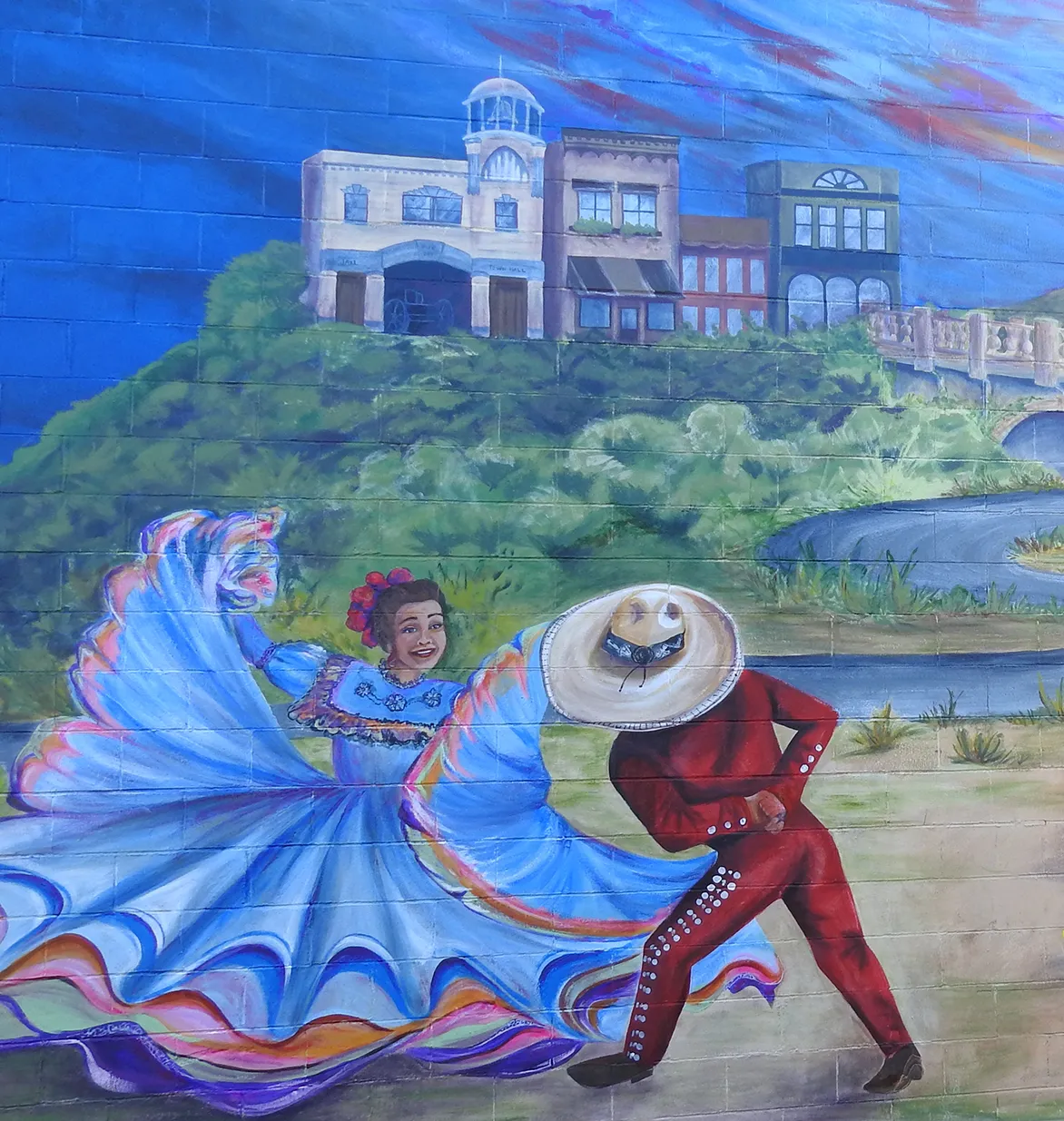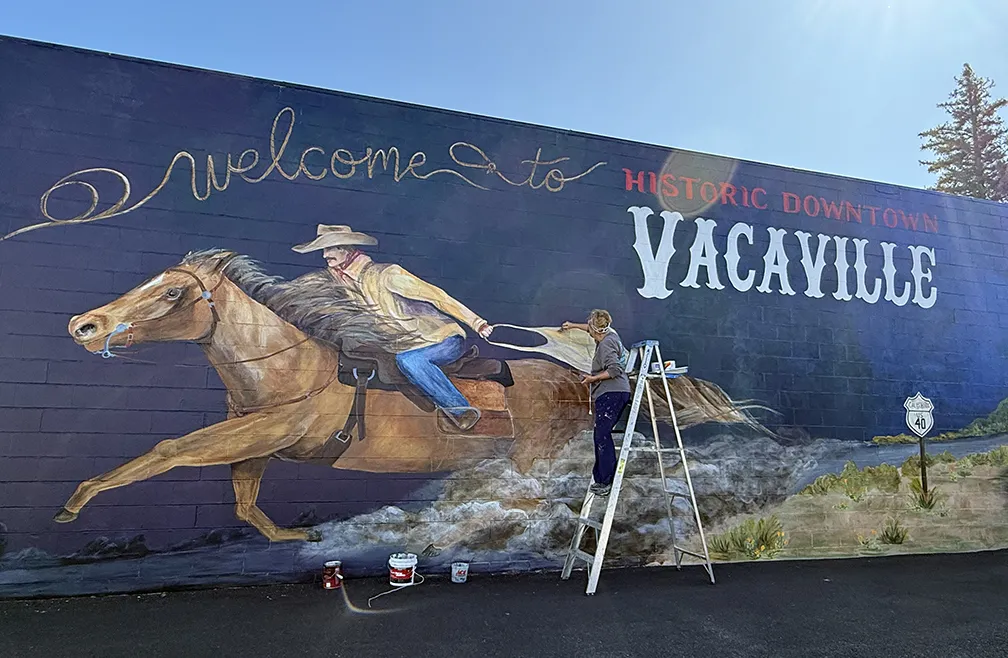
Joi McNeil's newly created large-scale mural in historic downtown Vacaville is drawing widespread raves--and deservedly so!
It not only celebrates the Pony Express Days of 1860-61 and the region's historically renowned fruit orchards, but it showcases the state flower, the California golden poppy; the state insect, the California dogface butterfly; the iconic monarch butterfly; and both honey bees and bumble bees.
It particularly captivates historians and delights entomologists.
The mural graces an outer wall of a building that houses Maya Hot Yoga and Wellness Studio, 373 Merchant St. It is directly across from the Gallery of Fireplaces.
McNeil, a native Californian "born and raised here," depicts a Pony Express rider racing so fast that his mailbag is airborne. The horse gallops in front of a California I-40 marker, the Old Town Hall, orchards lined with bee hive boxes, and crates filled with newly harvested fruits and walnuts. Hispanic dancers swish and swirl. Honey bees and bumble bees dot the landscape. Two dogface butterflies, a male and a female, flutter over the golden poppies. Another butterfly, a monarch, nectars on an adjacent poppy
This is McNeil's first mural in Vacaville, but she has created some 20 murals in the Bay Area and out-of-state since she began working with textural finishes 30 years ago.
"Most of my work is for private individuals so this is my first large scale mural that can be viewed by the public," McNeil said. "I am so happy that it is in my hometown and has been such a collaborative piece including the history of Vacaville and being able to add the details requested of me by the public."
State Flower and Insect
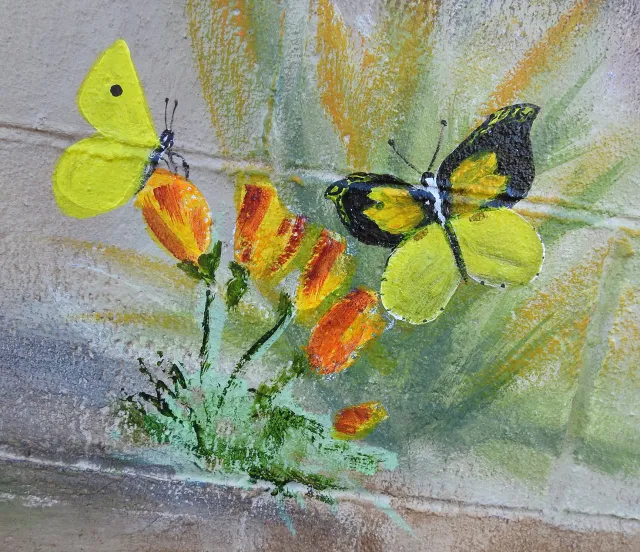
The California State Legislature proclaimed the golden poppy, Eschscholzia californica, the official state flower on March 2, 1903. The dogface butterfly, Zerene eurydice, found only in California, became the official state Insect on July 28, 1972. "California was the first state to choose a state insect—and thus, to choose a butterfly—though most of the other states have now followed, and many even have both a state insect and state butterfly," Wikipedia relates. "It took 43 years, a determined 4th grade class, and Fresno Assemblyman Kenneth Maddy to have the California Dogface butterfly designated as the state insect."
The dogface butterfly is portrayed in the logo of the Bohart Museum of Entomology, UC Davis, and on a first-class stamp. It thrives in the 40-acre Shutamul Bear River Preserve near Auburn, Placer County. (The preserve, part of the Placer Land Trust, is closed to the public except for specially arranged tours.) The dogface butterfly has also been documented in Vacaville. UC Davis distinguished professor emeritus Art Shapiro detected the state insect in Gates Canyon, where its host plant, False Indigo (Amorpha californica) lives.
Pony Express
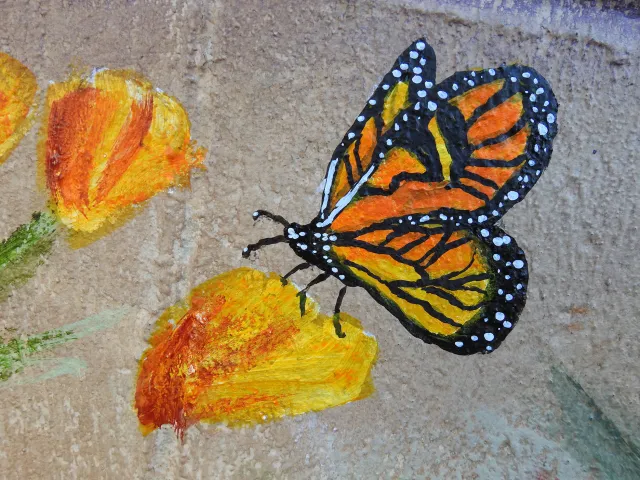
Pony Express riders stopped in Vacaville during the mail service's entire 18-month existence, from April 1860 to October 1861. The riders reined up at the E. F. Gillespie's store to deliver the mail and change horses. According to SeeCalifornia.com, young riders carried the mail from St. Joseph, Missouri to California "in the unprecedented time of only 10 days. Individual riders whose average speed was around 10.7 miles per hour would cover from 75 to 100 miles before reaching a home station to be relieved by another rider."
A typical trip involved a chain of more than 150 relay stations 10 to 15 miles apart, with 400 horses, and approximately 80 young riders, plus station keepers, stock tenders, route superintendents, and shuttling supply wagons.
“Before the Pony Express mail was created, it could take as long as six weeks for mail to arrive in California by packet boat from New York via the Panamanian isthmus,” according to See California.com.
Joi McNeil's mural prominently features the Old Town Hall, on East Main Street. Built in 1907, it was one of the first reinforced concrete structures in the West. It once housed the town's government offices and the town jail. Today it is the home of the Vacaville Heritage Council and its multitude of historical documents and artifacts.
Native Bees, Honey Bees
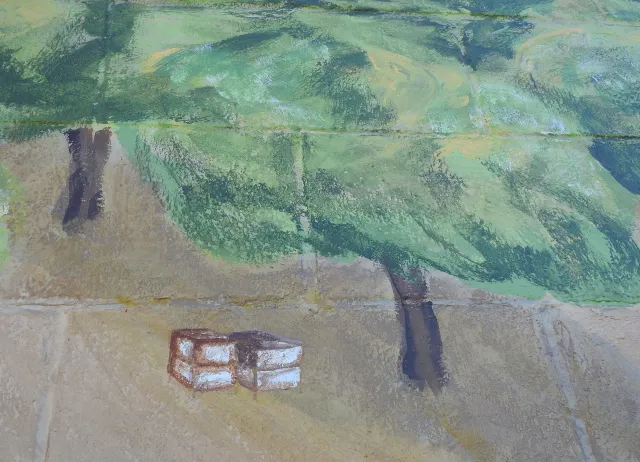
Native bees and honey bees play a key role in the mural. In the late 19th and early 20th centuries, Vacaville was a major fruit-growing region, known as the "Early Fruit District of California" and encompassing Vaca Valley, Pleasants Valley, and the surrounding hills. Vacaville was renowned for producing the first fruits of each season, including pears, peaches, and apricots.
The honey bee is not a native. European settlers brought the honey bee, Apis melliera, to what is now Virginia in 1622. Records show that honey bees were not introduced in California until March of 1853 when Texan botanist and beekeeper Christopher Shelton brought the first colonies from New York to California (San Jose area), by way of the Isthmus of Panama. A historical marker at the San Jose Municipal Airport heralds the event.
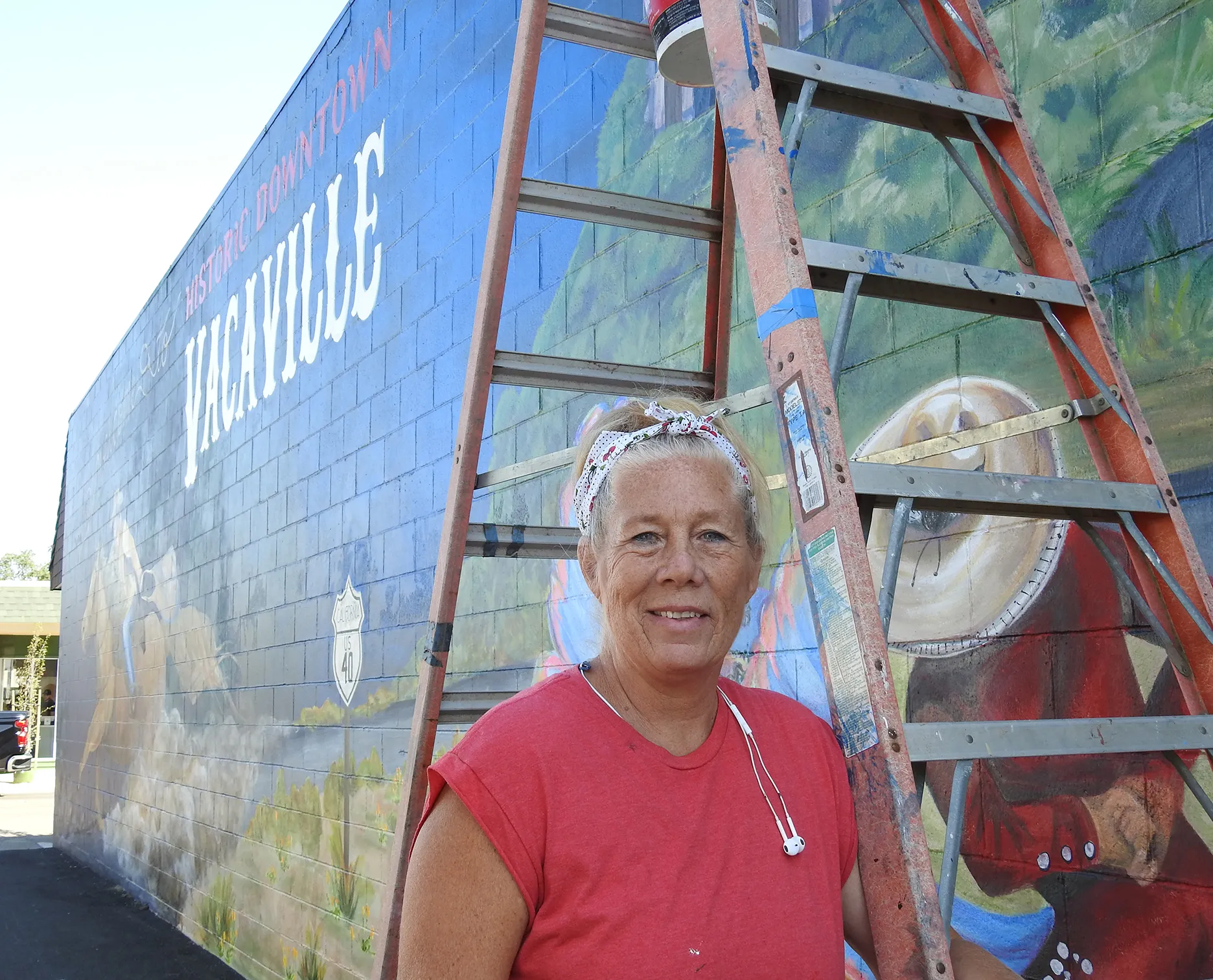
Meanwhile, McNeil's mural continues to draw such comments as "love it!" and "spectacular!" and "incredible."
"Most of my art," McNeil said, "has included the ocean which is something very important to me (she is a scuba diver and instructor) so this was the first piece I have worked on that is more about history of Vacaville. I believe art can impact a community and I am so honored to have been a part of this beautiful piece of art!"
McNeil, an avid scuba diver and instructor, commented: "Most of my art has included the ocean which is something very important to me so this was the first piece I have worked on that is more about history of Vacaville. I believe art can impact a community and I am so honored to have been a part of this beautiful piece of art!"
Her social media contacts are on all platforms:
Facebook: https://www.facebook.com/joi.mcneil/
Instagram: https://www.instagram.com/joimcneil/?hl=en
TikTok: https://www.tiktok.com/@joiart
